
All categories
Featured selections
Trade Assurance
Buyer Central
Help Center
Get the app
Become a supplier

(3500 products available)















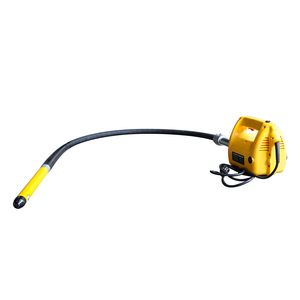

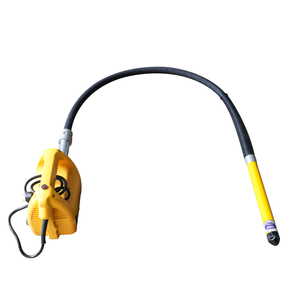
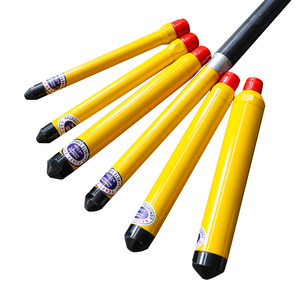




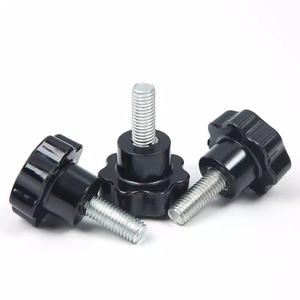

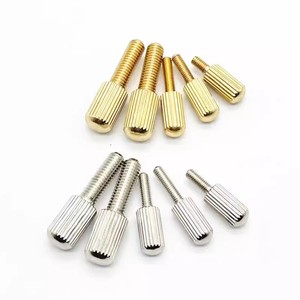






Vibration bolts have multiple configurations to suit some applications' functional and performance requirements. Vibration bolts are ultimate hardware solutions to counteract fastening weaknesses and the eventual loosening of bolts due to mechanical vibrations. One thus encounters the following several common vibration-sensitive environments and uses:
This comprises a mechanical assemblage of metal and polymeric vibrations derived from the mounting principles of electromagnetic suppressive components. The polymeric sleeve encased over the metallic bolt head and section stem helps absorb impact and drags energy from mechanical waves very efficiently transmissible through rigid joints to lessen the passage to the machinery subdued. Industrial applications like compressors, fans, and pumps requiring assembly fixation for operational smoothness will most benefit from vibration damping reinforcement. Installation is relatively easy, with no special tools required on the bolt, and is compact, unobtrusive, and portable, measuring only about 3 inches long and 0.75 inches in diameter. The polymer protective casing is durable, rated for temperatures of up to 200oC.
Elastic vibration bolts are surface-mounted mechanical fasteners designed to minimize system vibrations progressively. Their main feature is an integral elastic material embedded within or juxtaposed to the metallic components that deform instantaneously under static load but further, it will not dismantle under dynamic vibration. This surface mount technology bolts is critical in applications where machinery or structural damping is paramount, such as in automotive suspension frames, aerospace components, and heavy industrial machinery. While fulfilling its fastening role, it will also reduce vibration transmission by approximately 90%, thus increasing overall system life and reliability. They are enjoyed by industries focused on quality and reliability in their machinery.
These bolts analyze, then utilize acoustic energy addition to advanced materials and engineering geometry to disrupt vibrational transmission effectively. Acoustic Vibration Bolts are engineered to identify and attenuate specific vibration frequencies, thereby ensuring critical machinery and structural elements are well protected from undesired dynamic loads. These bolts prove indispensable in industries like marine, aerospace, and high-tech manufacturing, where operational gains from these technologies reside within tight tolerances. Besides, their diagnosable nature affords pre-emptive functionality checks that facilitate maintenance scheduling before system failure occurs. This technology is close to the cutting edge and is to be applied mainly in fields where intricate machinery sensitivities need monitoring.
Understanding the specifications and maintenance requirements for vibration bolts is paramount for industries wishing to detract from downtime and accommodate operational efficiency. There has been a detailed presentation of the relevant specification parameters and guidelines on how to demonstrate the long-life self-loosening bolts for mechanical applications.
Vibration bolts find numerous industrial applications where mechanical equipment's functional sensitivity and operational stability need safeguarding from dynamic loads due to recurrent motions. These bolts are valued for their ability to prevent component loosening, reduce maintenance costs, and increase overall equipment reliability. Below is an overview of critical industries and the roles vibration bolts play in enhancing performance and sustainability.
Over the years, vibration bolts have found their application as crucial elements in the aerospace industry. Designed to keep integral systems fixed, these bolts reduce vibrations on key equipment such as avionics, engines, and airframe assemblies. Moreover, the bolts' advanced features, integrated with acoustic and elastic damping capabilities, ensure the sensitive aircraft constituents endure none of the operational stresses. They securely fasten components even under the extreme conditions of high-velocity flight and atmospheric changes. Their lighter weight and effectiveness in reducing maintenance interventions required on aircraft systems, thus increasing operational reliability, have been greatly embraced in this industry.
The inhospitable operating environment on a ship requires the use of advanced fastening technology to ensure vessels' integrity over time. Marine systems are subject to continuous wave action, rough handling, and the elements, setting distortion paths. In sensitive boat engines, hulls, and structural supports, vibration damper in bolts effectively minimizes the vibration transmittance, thus lowering fatigue and corrosion activity on critical underwater and marine equipment. For instance, bolts designed for naval vessels or commercial shipping have enhanced the durability of critical systems while increasing the maintenance routine to be less frequent. The naval and commercial vibration damping bolts applied to ships and submarines embedded into acoustic damping principles to address issues related underwater effects and sonar interference.
A prime user of vibration bolts is the automobile industry, where these bolts help ensure the performance and safety of engines, suspension systems, and electronic components. Used in connection with engine mounts, suspension systems, and various electronic assemblies, vibration bolts minimize resonance, which can lead to the loosening of critical fastenings and thus enhance the smoothness of operation and be a contributing factor to the reduction of noise. Under the application, elastic vibration bolts integrated into the vehicle structure and suspension systems contribute to the vehicle dynamics balance, noise, and enhanced ride quality in premium vehicles. These bolts reduce the mechanical vibrations transferred from the engine to the vehicle chassis, enhancing passenger comfort while protecting sensitive electronic and mechanical systems from premature wear.
Vibration bolts in heavy industrial applications' sensitive manufacturing machinery sustain and endure tremendous loads and dynamic vibrations. Bolts employed in any machinery installed in large plants, excavators, or vibrating screens will reduce the effects of vibration shock on these machines to a minimum, thus ensuring alignment and continuity of operation. Such equipment employed in the mining, construction, or any industrial environment, subjected to high requital vibrations, equipped with vibration bolts, has increased the life cycle of both the machinery and the tools used in its operation due to reduced wear and tear. The installation of these bolts has less operational downtime and increased productivity as a bonus.
Choosing the correct vibration bolts for an application demands comprehensively addressing several critical factors to ensure operational efficiency and system reliability. To detach the self-loosening nuts and bolts from downtime and accommodate the needs of several industries, the following need consideration:
A1: Vibration bolts damp and absorb vibrations transmitted from machines to prevent loosening, thus protecting sensitive components and ensuring structural integrity.
A2: Materials vary depending on the environment and load. Common materials include stainless steel, rubber, elastomers, and composites for added strength, flexibility, and corrosion resistance.
A3: The bolts must be evaluated regularly, specifically when maintenance is done on the equipment. The signs to look for include fatigue, corrosion, or physical damage. There should be a definitive plan for replacement so that the functioning of the relevant equipment will not be compromised at the crucial time.
A4: Certain bolts require special tools, such as acoustic vibration bolts that need guided ultrasonic scanning for installation. Most, however, can be installed using standard hardware tools.
A5: Aerospace, marine, automotive, industrial machinery, and high-tech manufacturing are some of the most common applications that benefit significantly from using vibration bolts.